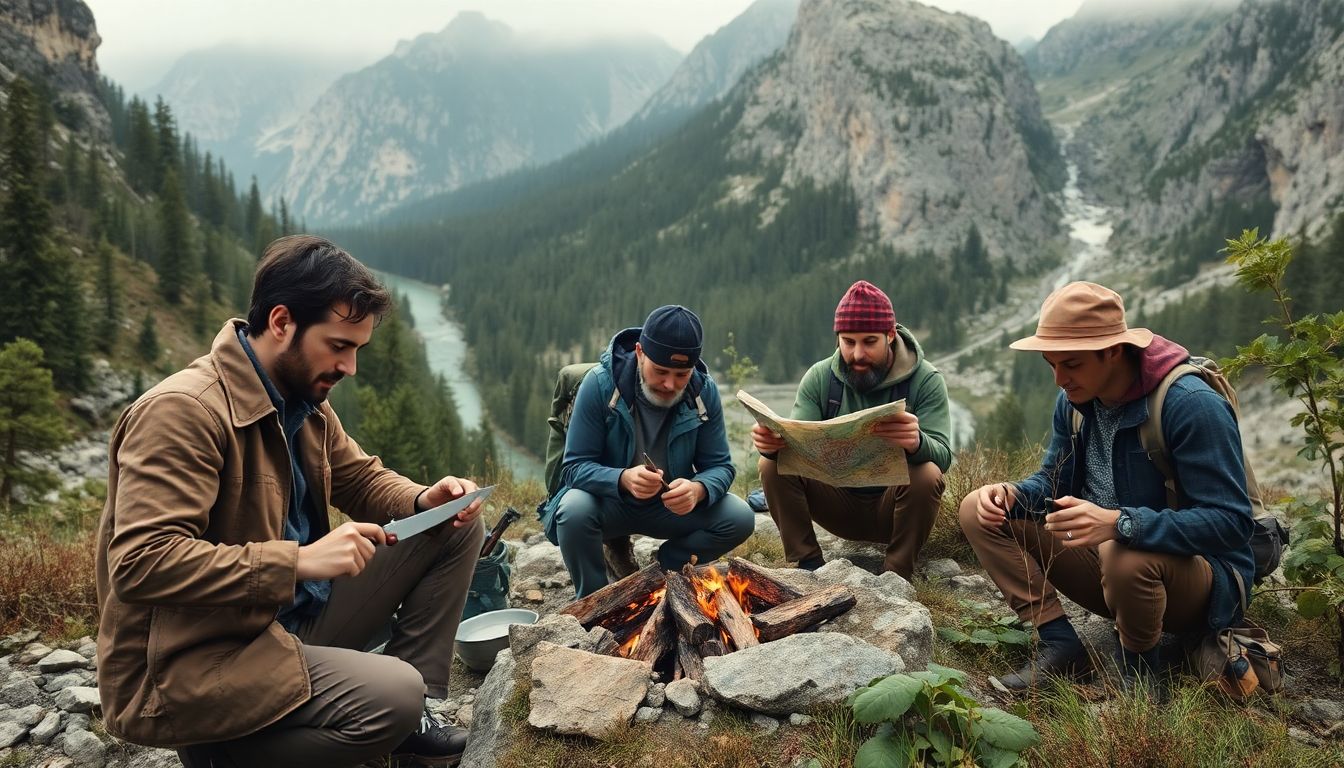Okay, picture this: you’re in the woods. Your phone is dead. Darkness is closing in, and panic begins to set in. What do you do? Survival skills are what will save your life when it comes time to live in the wild. These skills will change a horrid situation into a manageable one. This article will provide you with the basics on how to survive outdoors.
Shelter-Building: Your First Line of Defense
It is everything. It protects you from the weather while keeping you warm. Speed is of the essence in finding or building one because it could make the difference between spending an uncomfortable night or something much worse.
Natural Shelters: What Nature Has To Offer
It makes nature provide a lot of ready-made shelters. Caves, rock overhangs, and thick bushes can save you.
Caves are good but check first for animals. Rock overhangs will shelter the rain, but beware of falling rocks. Dense bushes can hide you, but they might be home to insects.
Actionable Tip: It is essential for a natural shelter to be safe. Look for animal signs or unstable rocks for safety before considering sheltering in one.
Improvised Shelters: Build from Scratch
If natural materials are not available, this is the easiest option to build your own shelter: debris hut or lean-to. In snowy areas, a snow shelter has saved many lives.
A lean-to is simple. Find a strong branch and lean it sideways against a tree. Then smaller branches are leaned against the first. Then, it is covered with leaves and dirt on top for insulation.
Actionable Tip: To build a simple lean-to, find a sturdy branch. Prop it up, and cover it with leaves.
Fire Starting: Mastering the Flame
Fire is the heat for cooking food and calling in rescue. It encourages and raises the morale of campers.
Gathering Materials: Tinder, Kindling, and Fuel
Well, and dry grasses, bird nests, and bark would all make excellent tinder. Small twigs are excellent kindling, and larger sticks and logs are fuel. Some unusual types of tinder, like cotton balls with petroleum jelly, would also work.
Real-world Example: Potato chips were used for tinder once! The oils made it burn.
Fire-Starting Methods: Friction, Sparks, and More
Best and easiest way matches and lighters. What if it gets wet? A fire starter is a good backup. Otherwise friction techniques like bow drill will take a lot of practice.
For a fire starter, scrape magnesium. Strike the flint so as to form a spark. Aim the spark toward the very tinder. It is technically a friction heat method and requires patience and skill for one to learn.
Actionable Tip: Practice starting a fire with different ways in a safe place. Learn what works best for you.
Water Sourcing and Purification: Staying Hydrated
Water is life itself. Dehydration can kill you in days. Finding and cleaning water is very important.
Water Acquisition: Identifying Possible Sources
Look for streams, rivers, and ponds. Rainwater is safe to drink. Dew can be collected from plants. Even animal tracks could bear water.
Rainwater may be collected using a tarp or large leaves running into a container. Greenery is an indication of possible underground water in arid regions.
Practical Tip: When the ground is dry, animal tracks are almost always a guide to water.
Water Purification: Using to Potable Water
Boiling water kills germs. Filters remove dirt and other organisms. Water can also be purified using iodine tablets or bleach.
Boil water for one minute. A simple filter can be made with sand, charcoal, and cloth. Iodine tablets need thirty minutes to work.
Practical Tip: Build a water filter from a plastic bottle, sand and charcoal. This could save your life.
Food Acquisition: Keeping Up Your Strength
Food provides energy, so survival is weeks without nourishment. Finding sustenance is integral. There are many ways to gather or hunt for it.
Foraging for Edible Plants: Knowing What to Eat
Learn to identify edible plants in your area. Never eat something unless you are 100-percent sure of what it is.
Acorns, berries, and cattails are generally safe. The Universal Edibility Test entails rubbing a tiny bit of a plant on your skin, then touching it to your lips, and finally eating a small piece, then waiting for a reaction.
In the real world: Someone mistook water hemlock for parsnip. It was a bad mistake.
Basic Trapping Techniques: Small Game Catching
Snares and traps can catch rabbits and squirrels, but check the local laws first-it can be tricky.
A simple snare can be made from a loop of wire or rope. Place it in an area where animals travel. When the animal steps into it, the loop will tighten.
Actionable Tip: Create your own snare; practice setting it up in your backyard.
Navigation and Signaling: Get Found
Stay oriented; energy is wasted when lost. Know how to signal for help.
Basic Navigation: Using a Compass and Natural Clues
A compass and map help find the way. The sun, stars, and moss can point as well.
Hold a compass flat. Turn the dial so that the needle aligns with north. Follow your bearing. In some areas, moss grows on the north side of trees.
Actionable tip: Practice taking compass bearings in a park-it will help you in the exact moment you need it.
Signaling For Help: Attract Attention
Much smoke is generated from Signal fires. Ground-to-air signals use bright colors. Whistles and mirrors also help.
Conclusion
Survival skills are majority important for dangerous situations. We have extensive coverage of shelter, fire, water, food, navigation, signaling, and first aid. Don’t stop learning and practicing; you don’t learn survival skills; you learn survival ways of thinking.
